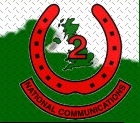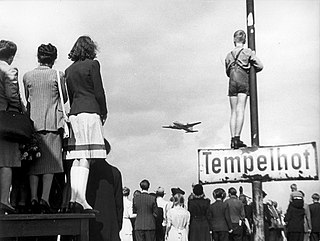
The 32nd Signal Regiment is a British Army Reserve Regiment of the Royal Corps of Signals. The regiment forms part of 1st (UK) Signal Brigade, providing military communications for national operations.

The 35th Signal Regiment was a British Territorial Army regiment of the Royal Corps of Signals.

2nd Signal Brigade was an operational Brigade of the Royal Corps of Signals with a regular HQ, 1 regular regiment, and a number of Territorial Army signal regiments.

34 (Northern) Signal Regiment was a Territorial Army regiment in the Royal Corps of Signals in the British Army. The regiment formed part of 12 Signal Group, providing command and control communication for NATO's Allied Rapid Reaction Corps (ARRC). As a result of the Strategic Review of Reserves it was announced on 28 April 2009 that the regiment was to be disbanded The regiment consisted of three squadrons plus the band:

216 (Parachute) Signal Squadron is a squadron of the British Army's Royal Corps of Signals that is responsible for installing, maintaining and operating all types of telecommunications equipment and information systems in support of the 16 Air Assault Brigade. 216 (Parachute) Signal Squadron provide OpCIS and TacCIS to the Bde Comd and his staff.
Near East Command was a Command of the British Armed Forces.

The 14th Signal Regiment is a part of the British Army's Royal Corps of Signals. The Regiment's unique role is to provide a robust and sustainable Electronic Warfare (EW) capability in support of deployed Land Commanders, in order to enable operations in the electronic battlespace. It is the only British Army Regiment capable of conducting sustainable electronic warfare in support of national operations worldwide. The Regiment is currently based at Cawdor Barracks, on the site of the former RAF Brawdy, near Haverfordwest, in South Wales.

Fulham House is a military installation at 87 Fulham High Street, Fulham, London. It is a Grade II listed building.

1 Signal Squadron was British Territorial Army Squadron of the Royal Corps of Signals part of 38 Signal Regiment.
1 Signal Regiment is a military communications regiment of the British Army. The regiment is now part of the 11th Signal Brigade and provides signal support to two armoured infantry brigades.

2 Signal Regiment is a regiment of the Royal Corps of Signals within the British Army. It consists of three signal squadrons and a support squadron. One of its signal squadrons is part of the Queen's Gurkha Signals. The regiment is part of the 11th Signal Brigade and is headquartered in York. It traces its lineage back to 2nd Company, The Telegraph Battalion, part of the Royal Engineers. For most of its existence the regiment supported the 2nd Infantry Division and was known as 2nd Signal Regiment, although for a time it was combined with 2nd Infantry Division headquarters as the 2nd Division Headquarters and Signal Regiment.
The 3rd Signals Regiment is a regiment of the Royal Corps of Signals within the British Army. The regiment has recently converted from a divisional signal regiment to a support signals regiment part of the 11th Signal Brigade, but has remained at Bulford.
The 12th Signal Brigade was a military communications formation of the British Army. It assisted the 1st British Corps and provided second line communications in the Low Countries.
The 10th Signals Regiment was a former regiment of the Royal Corps of Signals within the British Army.
The 13th Signals Group was a military communications brigade sized formation of the British Army. The group was established in 1967 to control the territorial signals regiments with national communication duties in the United Kingdom. It was later disbanded in 1974, when it merged with the 2nd Signal Group.

The 21st Signal Regiment is a signal regiment of the Royal Corps of Signals within the British Army. The regiment was, until the initial Army 2020 reforms, the only signal regiment to support the Royal Air Force.
The 1st Signal Group later 1st Signal Brigade was the un-official predecessor to the modern, yet completely different brigade, 1st Signal Brigade.













